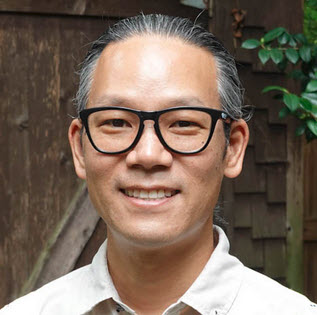Q&A with Naoya Wada, by John Fleming
McLendon Avenue stretches just under two miles from Little Five Points, through the heart of Candler Park and Lake Claire emerging again at Ridgecrest, just short of Dekalb Avenue.

It’s a thoroughfare for vehicles in the area, the route many of us take to go about our business or on our way to play. It’s how our children, in that big yellow bus, get to school, how visitors explore our part of town; how some of them cut through our part of town. It’s the route countless pedestrians use to get to Little 5, the Candler Park Market, Lake Claire Park and everything in between.

It’s pretty much the main way through this part of Atlanta, providing for commerce, recreation and everyday living for so many here.
That pumping artery of the neighborhood, is just the thing though. All that busyness creates an avenue that could be safer, easier to navigate and, well, nicer.
This… is news to no one. Long have the residents and travelers from the corner of Josephine to Howard Circle had to endure fast cars, worry about pedestrian safety, suffer from an absence of bike facilities, put up with bad sidewalks, and so on.
This part of town, however, does more than curse the darkness. Ours is a doer neighborhood.
So, behold Safer McLendon, an effort created to find solutions to safety issues along the avenue. The rubber hit McLendon, you might say, when the CPNO Infrastructure Committee created Safer McLendon, a joint Candler Park-Lake Claire venture, and hired the Atlanta-based design and planning firm Lord Aeck Sargent to conduct an eight-month study last year. Since August 2022, this firm has conducted numerous public meetings, workshops and planning sessions. The culmination of all that hard work so far is here.
This is just the beginning of course. If those cool designs in the report are to become reality, then there is a lot more work to be done.
To find out how much more work, how long it’s going to take and what comes next, we caught up with Naoya Wada, the CPNO Infrastructure Committee chair.
Working with residents and consultants, he’s been the driving force in making sure Candler Park and Lake Claire get not only ideas, but a realistic and courageous game plan for transforming McLendon from a traffic artery into the fabric of the calm and peaceful neighborhood it transits.
John Fleming: Would you tell us how all this got started?

Naoya Wada: The conversation around Safer McLendon began prior to my getting involved, but at the core of it all, it has always focused on safety and slowing down vehicular speed. The two really go hand-in-hand. We’ve always wanted to ensure that everyone who uses McLendon in a more active manner feels welcome to do so. Having seen some close calls and hearing of accidents from neighbors, this was just something that needed to happen.
JF: What were some of the main findings of the study?
NW: We [Safer McLendon] were fortunate enough to fundraise to allow us to hire Lord Aeck Sargent to help us gather input and make recommendations from all the data we received. They helped organize and facilitate public input meetings, both in person and online. What we heard in these sessions was encouraging. Our neighbors were just as concerned about the speed of vehicles and their safety as we were.
JF: What were the biggest surprises from the study and from public feedback?
NW: I don’t know if there were any huge surprises. I enjoyed that we received a lot of feedback on not only the more frequented intersections (Oakdale, Candler Park Drive, Clifton), but also through the whole nearly two-mile stretch that is McLendon. People are concerned not only about the more commercial areas, but the intersections that they live near and that’s awesome to hear. Having thoughts on how to make it safer everywhere benefits everyone.
JF: Is it realistic to expect anything to happen, any improvements, in the near future or is this all tied to city DOT funding?
NW: Despite all that we have accomplished thus far, we still have a lot ahead of us. We are planning to take this project in three phases.
Phase 1 – Work with our city council members to determine what the “low hanging fruit” may be and see what we can do to get started there.
Phase 2 – See what opportunities there may be for Tactical Urbanism implementations for some of the larger aspects of the project. Though it’s not permanent, this will help us improve McLendon more quickly and in a very cost effective manner. [Click or tap here for a definition of Tactical Urbanism.]
Phase 3 – Work with the city on more permanent capital improvements.
JF: What are the next steps?
NW: One of our immediate next steps is to do more fundraising. We would love to see everyone support us at Fall Fest. We’ll also be doing more research on tactical urbanism and possible grants that we can apply for to help bring us one step closer to the improvements that the neighborhood would like to see. We appreciate donations; to donate, click or tap here.
JF: What else are you working on?
NW: We recently had another concerned Candler Park resident join us on our committee. Seth Eisenberg, (of Euclid Avenue) who recently wrote a piece in the Messenger, shared his concerns around the lack of sidewalks around the tennis courts at Goldsboro Park on Euclid. That’s something we would like to work with him on to help improve the neighborhood as well.